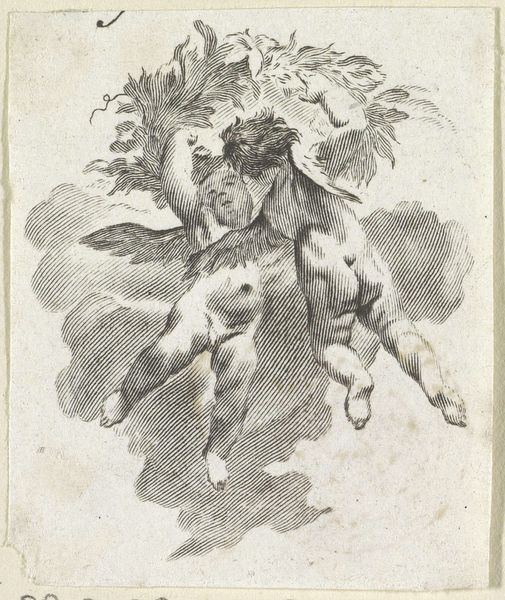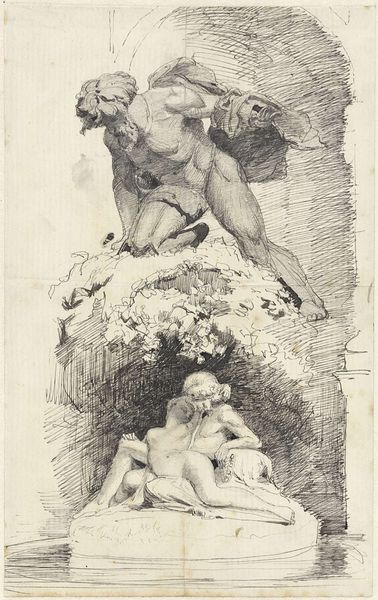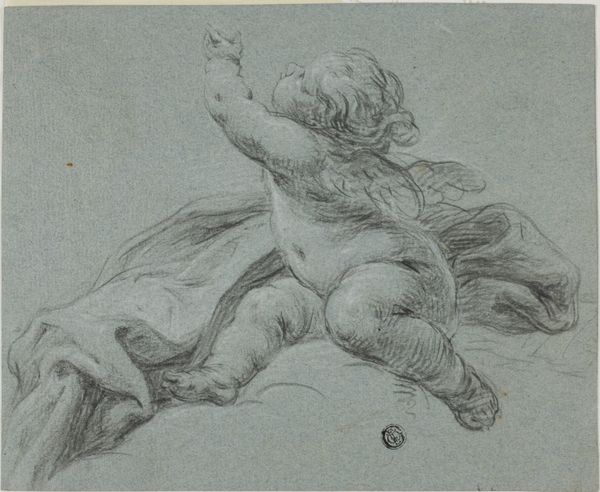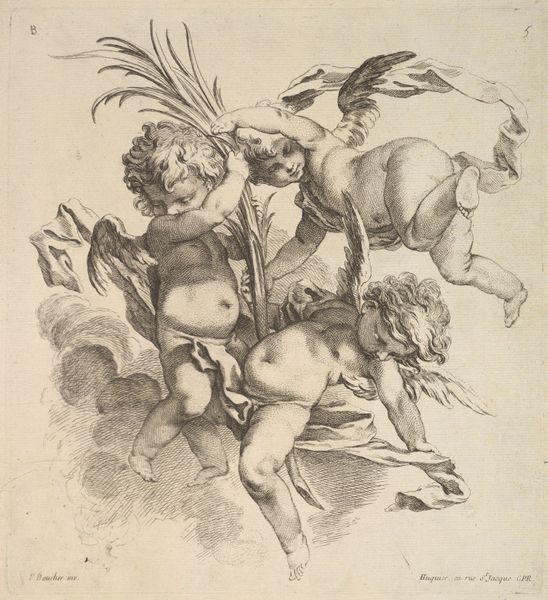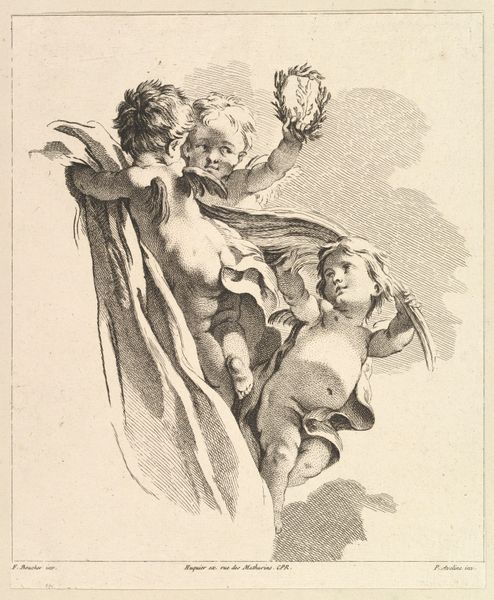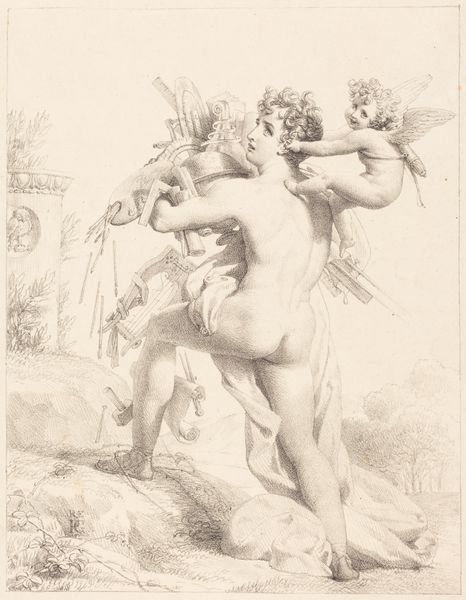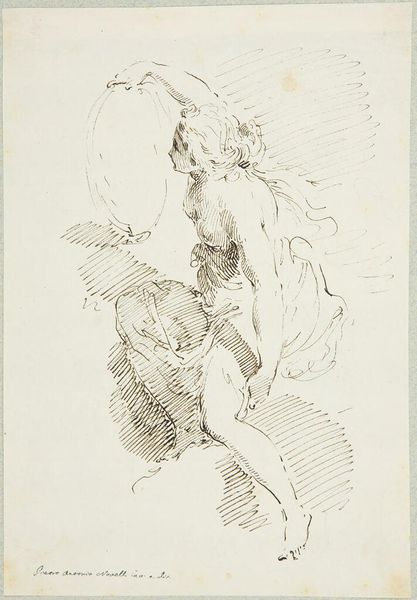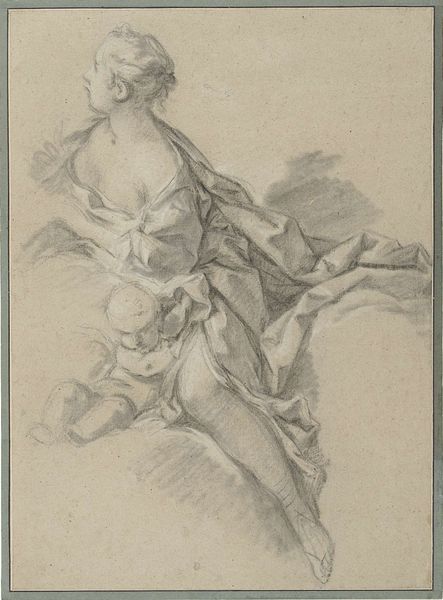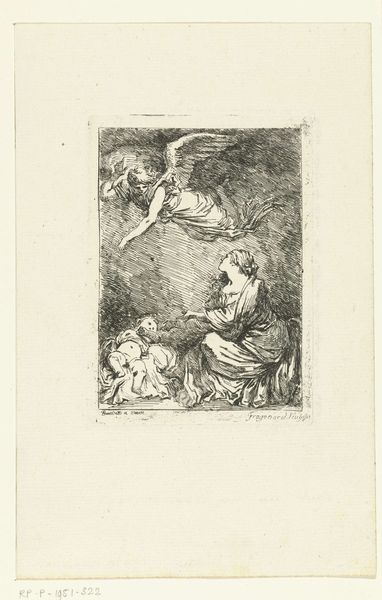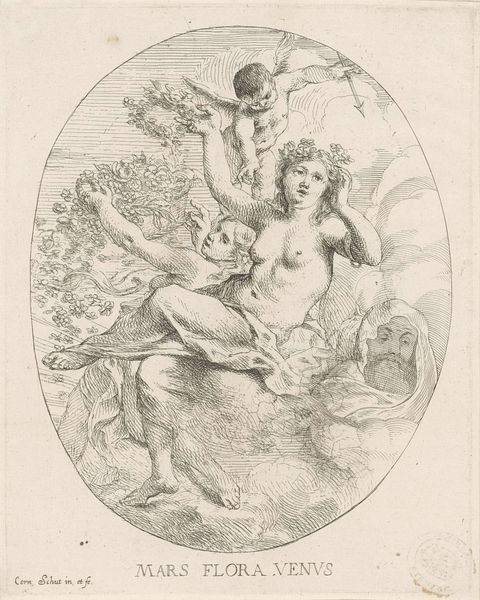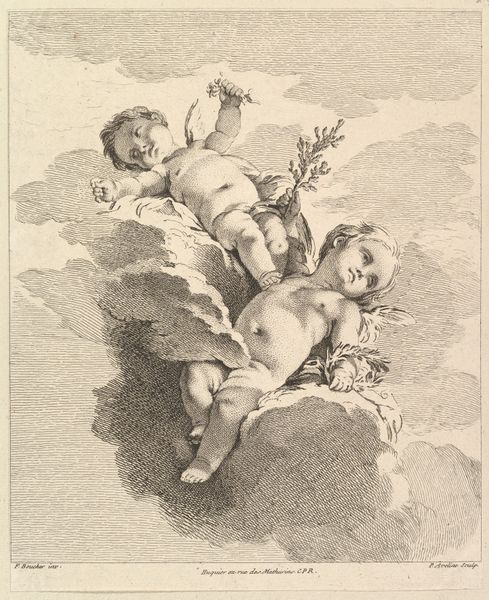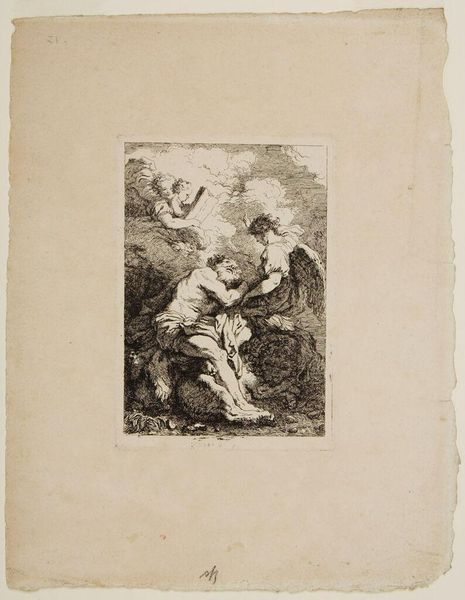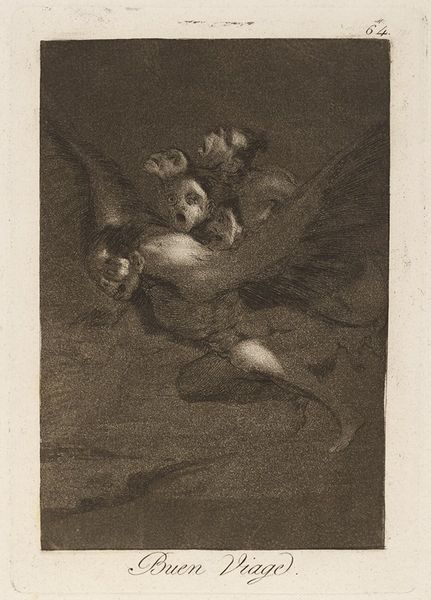
Dimensions: height 60 mm, width 65 mm
Copyright: Rijks Museum: Open Domain
Editor: Here we have "Hangende putto met bloemen," an engraving created between 1735 and 1800, attributed to Giovanni Cattini. The delicate lines create such a light, almost ephemeral feel. I'm really drawn to the textures here, but what are some of the formal qualities you see in this piece? Curator: Indeed, the textural variations achieved through the engraving technique are key. Observe the artist's sophisticated use of line weight and density to simulate depth and volume, particularly in the cherub's form and the surrounding clouds. Consider how the directionality of the lines contributes to a sense of movement and dynamism within the composition. Do you notice how the lines flow and change to shape the form? Editor: Yes, I see how the curving lines really define the body of the cherub. It’s almost sculptural, even though it's a flat print. I am interested in the Baroque-style movement captured, do you see meaning behind this? Curator: It’s a masterclass in illusion, isn’t it? Focus instead on its aesthetic qualities. Note the balance, achieved through the careful distribution of light and shadow. This suggests an inherent order. Notice, too, how the artist strategically uses negative space to accentuate the figure's presence. Consider what would happen if we radically altered this line's texture or if the curvature and depth were taken away. Editor: It would lose a lot of its character, I suppose. It's fascinating to consider the artistic choices behind something that appears so simple at first glance. Thank you, I am already thinking of it in new ways! Curator: My pleasure. Studying these compositional choices can really change your view and understanding of art in general.
Comments
No comments
Be the first to comment and join the conversation on the ultimate creative platform.
